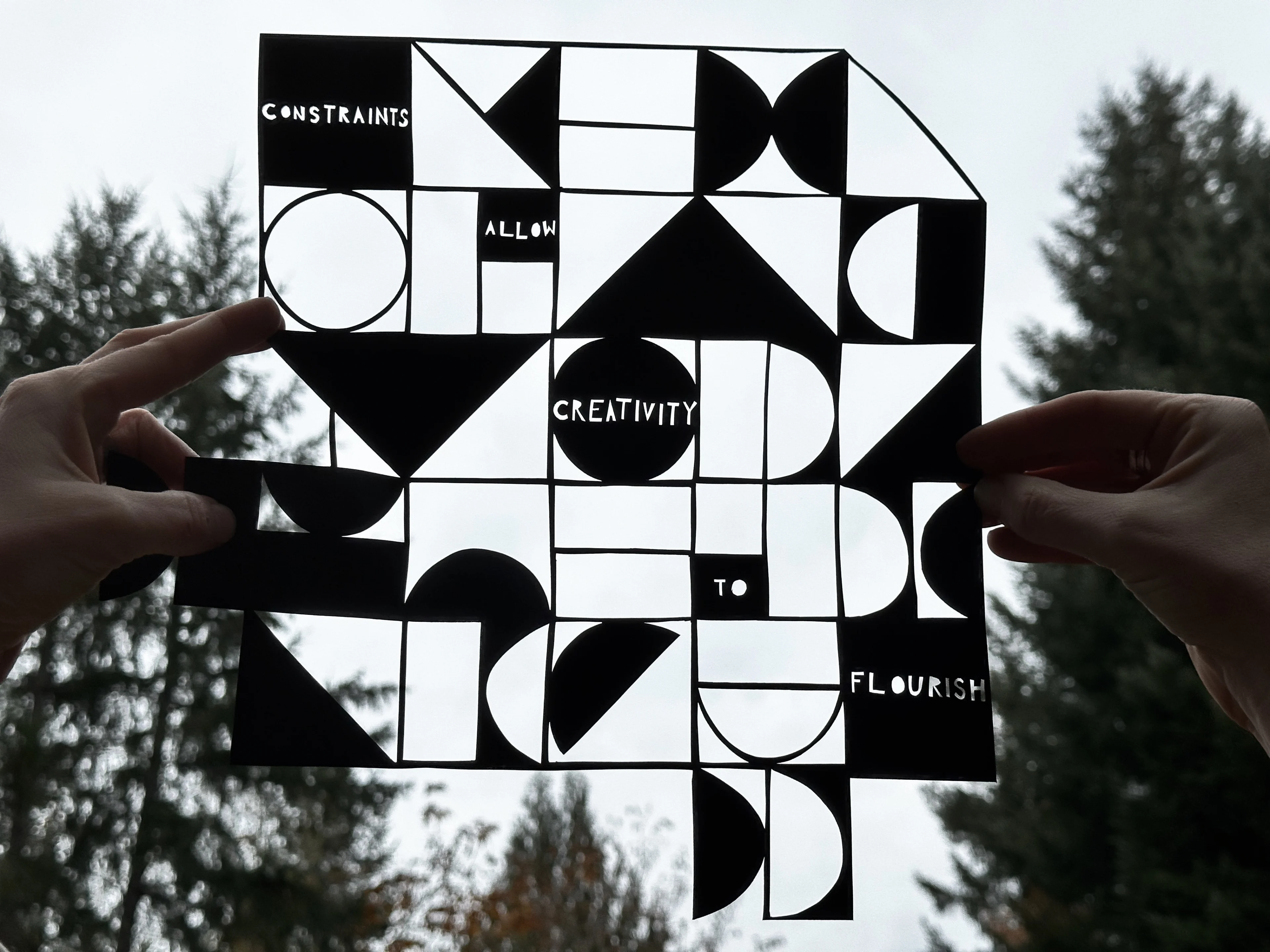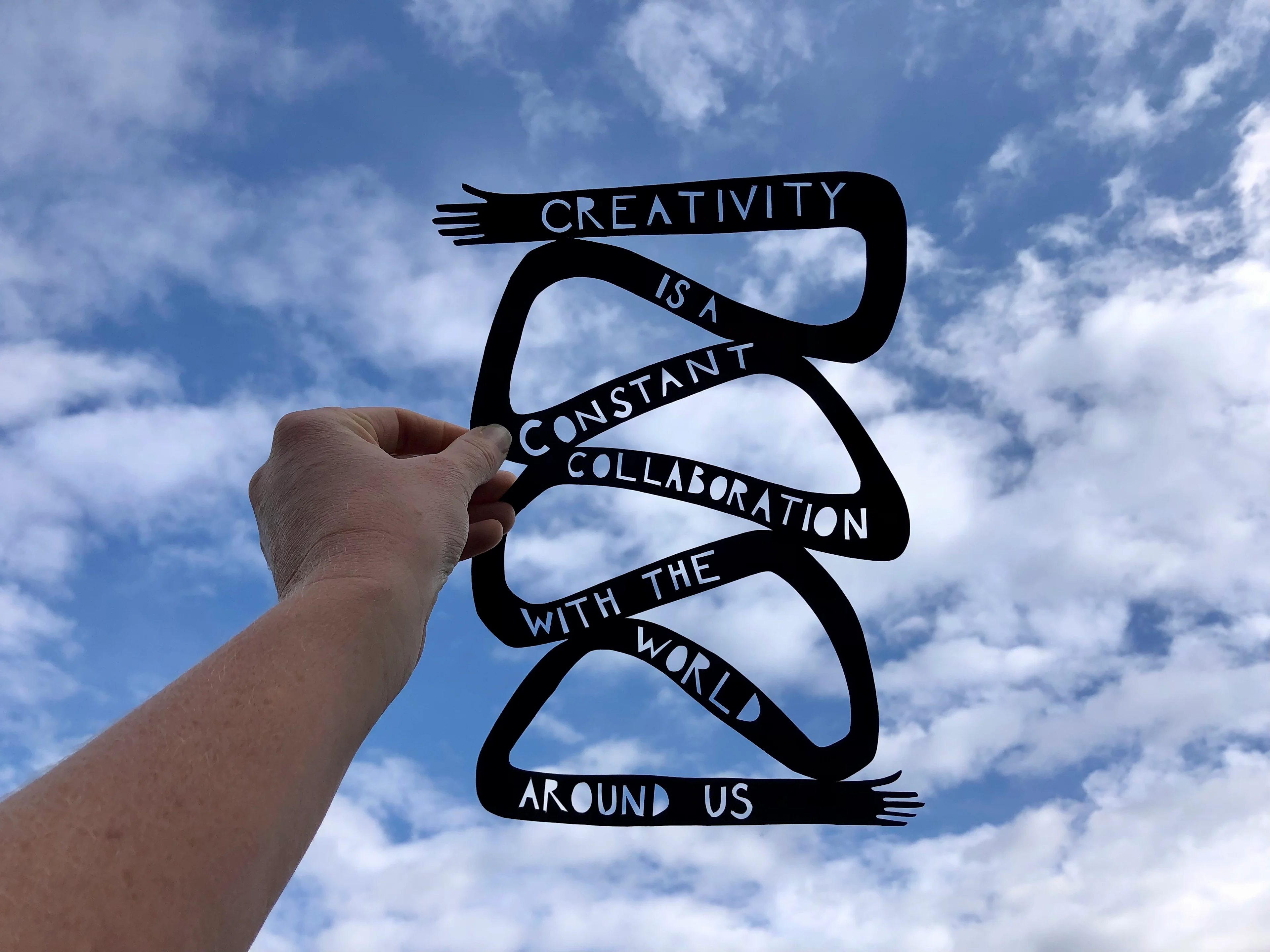The Creative Fuel Series: Constraints Allow Creativity to Flourish
- 1 December 2022
- ByAnna Brones
- 2 min read

Welcome to the season of constraints.
The earlier months in the calendar have their promise of new things to come, but this time of year we’re looking to finish, to conclude, to wrap up. The constraints are many. There are the constraints of deadlines, of fulfilling holiday orders, of prepping for holiday markets and sales. There are the constraints of family demands, of social obligations, of expected traditions, and the “I shoulds.” The constraints of dwindling daylight, and the darker moods that can come in a season that can be difficult for many. The constraint of having a lot to do but needing more sleep, of feeling like if only we had a little extra energy we might be better off.
It’s a full time of year, and it doesn’t always feel simple to move through it.
What does our creative practice look like during all of this? Given this season of constraints, I have been ruminating on how constraints and the creative process are linked.
We might see constraints as obstacles, but in fact, they can be essential for igniting creativity. Think about how an absolutely blank page can feel debilitating. What pressure! But a page with two marks, or two lines, or two sentences on it? Now we have something to work with.
Constraints encourage creativity and we can use them to our benefit. For example, Dr. Seuss’ work was created on a challenge of writing using a reduced vocabulary; Green Eggs and Ham had a limitation of only 50 different words. Dr. Patricia Stokes has covered this link between limits and creativity extensively in her book Creativity from Constraints: The Psychology of Breakthrough, and researcher Oguz Acar and his colleagues have mapped out the connection, identifying an inverted U-shaped relationship between constraints and creativity.
When there are no creative constraints, it’s easy for us to opt for the more intuitive solution, or worse, complacency sets in. But too many constraints can also be a hindrance. We have to figure out the sweet spot in the middle where constraints provide us the space to be more innovative, out-of-the-box, and creative.
Even without putting any specific constraints in place, we are likely already working with a few, and some of us have more than others. After all, who among us really has a truly metaphoric blank slate? There are always constraints at play: time, money, capacity.
But for indie artists and businesses, this time of year can feel particularly full of them, and it’s easy to take a “put your head down and get through it” approach. We may feel like we don’t have the space or the time for anything else. Instead we squeeze the bullet points on our to-do lists into every nook and cranny of the day.
When we’re in this space, we may not feel very creative in the usual ways that our creativity manifests. But that doesn’t mean we should abandon our creative practice. In fact, we need our creative process more than ever in this space. What if we took the constraints of the season to adapt our creative practice to serve us in a different way?
Art has been shown to lower cortisol levels and reduce stress, as well as enhance brain function. Even just looking at art can help our brain, and research shows that entering a flow state helps with our focus and cognition. All the more reason to take time to use our creative practice to our benefit.
How might a smaller, intentional creative practice help us to get through this time of year? We may not get endless, uninterrupted hours in the studio, but we can find small pockets, somewhere, anywhere. We can write snippets of sentences and thoughts on scraps of paper. We can put blobs of color in a sketchbook and write on top of them. We can make a meal full of colors that make us happy. We can walk outside and stare up into the clouds. We can light a candle at the end of the day. We can scribble.
In December, my husband and I try to commit to a regular morning practice. We light a candle, make coffee, and then sit down to do a small painting or drawing. It’s not an elaborate practice, but it’s a small pocket of space to be present. Starting the day off with a little infusion of creativity helps set the mood for the rest of the day.
This season asks us to figure out how to maneuver around the constraints. It asks us to rethink what purpose art and creativity serve in our lives. Creative practice isn’t just for the things we make and sell. It is for us. It is for our wellbeing.
Suleika Jaouad shared a quote from Helena Bonham Carter recently in her newsletter, and it speaks to these small ways that we can infuse creativity into our everyday.
I think everything in life is art. What you do. How you dress. The way you love someone, and how you talk. Your smile and your personality. What you believe in, and all your dreams. The way you drink your tea. How you decorate your home. Or party. Your grocery list. The food you make. How your writing looks. And the way you feel. Life is art.
It’s a good reminder that art isn’t a print we sell or a book we write—it is a way of being. We can infuse our day with creativity, and we can do so even in the smallest pockets of time.
In this season of constraints, ask this: what will I do not in spite of the constraints, but with the constraints? Be protective of your creative practice that you cultivate amongst the constraints. It is what will get you through.
1 December 2022
Words by:Anna Brones
Tags
- Share
